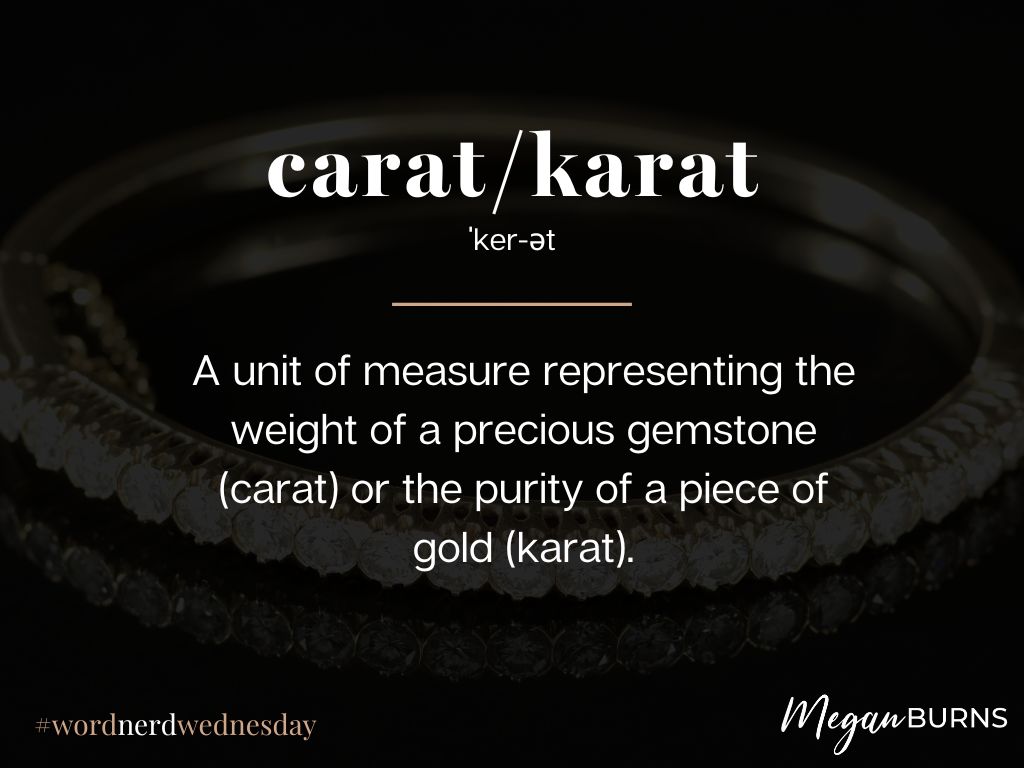I’ve always loved jewelry. Maybe it’s because my parents met working in a jewelry store!
Still, I never knew the origin of the words “carat” (measure of gemstone weight) or “karat” (measure of gold purity) until last week when I watched a documentary on the ancient Nabateans.
Back then, seeds of the Carob tree were used to measure small quantities of things because they are remarkably consistent and uniform. The ancient Arabic word for that plant was “quirat,” which got absorbed into Latin and eventually morphed into several romance languages through the centuries.
The “k” spelling became associated with gold purity in Roman times. One carob seed was the same weight as 1/24th of a gold coin from the Byzantine empire. I piece of pure gold would be 24/24ths gold, or 24 carob/karat. Eighteen karat gold was be 18 carob seeds worth of gold + 6 carob seeds worth of some other metal. Such a mix is less expensive and more durable. That’s why most gold jewelry is 10, 14, or 18k.
I wasn’t able to find much information on how the “c” spelling came to be associated with gemstones. Scholars think it happened some time in the late 16th century. Modern diamond marketers owe whoever started it a big thanks. “K Triple-C” isn’t nearly as catchy or memorable as “The Four Cs” of diamonds.*
If you’re curious about Carob seeds, I think you can buy them in health food stores and online. They are supposed to have many health benefits, and I’m sure they cost much less than the shiny objects that bear their name.
Personally, however, I’ll take the sparkle.
Diamond marketing is a fascinating story in and of itself. I’ve linked to an article from “The Atlantic” about it in Comments).
Link in first comment: https://www.theatlantic.com/international/archive/2015/02/how-an-ad-campaign-invented-the-diamond-engagement-ring/385376/


